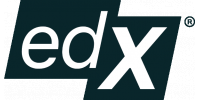- Sur www.edx.org
Introduction to Biomedical Imaging

- À son rythme
- Accès libre
- Certificat payant
- 12 séquences
- Niveau Introductif
Détails du cours
Déroulé
The Introduction to Biomedical Imaging course incorporates a case study which is introduced at the start of each episode. This case study will follow a hypothetical patient required to undergo various imaging modalities for a medical condition.
For each episode we include information relevant to that modality and the basic scientific principles, hardware and technology, and clinical applications.
- In episode 1, we'll consider x-rays.
- In episode 2, we'll explore computerised tomography (CT).
- In episode 3, you'll learn about ultrasound (U/S).
- In episode 4, we'll discuss magnetic resonance imaging (MRI).
- In episode 5, you'll learn about PET and SPECT.
Each episode will include several short quizzes which will not contribute to your final grade and will help you understand the key points.
To complete the course, the assessment is a marked quiz for each episode that will contribute to your final grade, plus a final assessment called Assessment Scenarios at the end of the course. Assessment Scenarios involve reviewing 2 case studies/scenarios and answering questions related to imaging modalities of relevance.
Prérequis
High school level in scientific fields such as biology and a desire to learn are highly recommended. For the advanced section of the course, first tertiary year of applied mathematics or computer science specialised in modelling is recommended.
Intervenants
Graham Galloway
Director, National Imaging Facility
The University of Queensland
David Reutens
Director, Centre for Advanced Imaging
The University of Queensland
Ian Brereton
Director, Research and Technology, Centre for Advanced Imaging
The University of Queensland
Gail Durbridge
Senior Research Radiographer, Centre for Advanced Imaging
The University of Queensland
Karine Mardon
Facility Fellow for the preclinical PET/CT
The University of Queensland
Damion Stimson
Research Radiochemist, Centre for Advanced Imaging
The University of Queensland
Rajiv Bhalla
Head of PET and SPECT radiochemistry programs
The University of Queensland
Andrew Janke
Facility Fellow for Informatics
The University of Queensland
Éditeur
L'Université du Queensland est une université publique de recherche située principalement à Brisbane, la capitale de l'État australien du Queensland. Fondée en 1909 par le parlement du Queensland, l'UQ est l'une des six universités de grès, une désignation informelle de la plus ancienne université de chaque État.
En combinant les trois classements mondiaux des universités les plus établis en 2023, l'Université du Queensland est classée 2e en Australie et 42e au monde. UQ est également membre fondateur d' edX, le principal groupe des huit d'Australie et l' association internationale à forte intensité de recherche des universités du Pacifique.

Plateforme
EdX est une plateforme d'apprentissage en ligne (dite FLOT ou MOOC). Elle héberge et met gratuitement à disposition des cours en ligne de niveau universitaire à travers le monde entier. Elle mène également des recherches sur l'apprentissage en ligne et la façon dont les utilisateurs utilisent celle-ci. Elle est à but non lucratif et la plateforme utilise un logiciel open source.
EdX a été fondée par le Massachusetts Institute of Technology et par l'université Harvard en mai 2012. En 2014, environ 50 écoles, associations et organisations internationales offrent ou projettent d'offrir des cours sur EdX. En juillet 2014, elle avait plus de 2,5 millions d'utilisateurs suivant plus de 200 cours en ligne.
Les deux universités américaines qui financent la plateforme ont investi 60 millions USD dans son développement. La plateforme France Université Numérique utilise la technologie openedX, supportée par Google.

